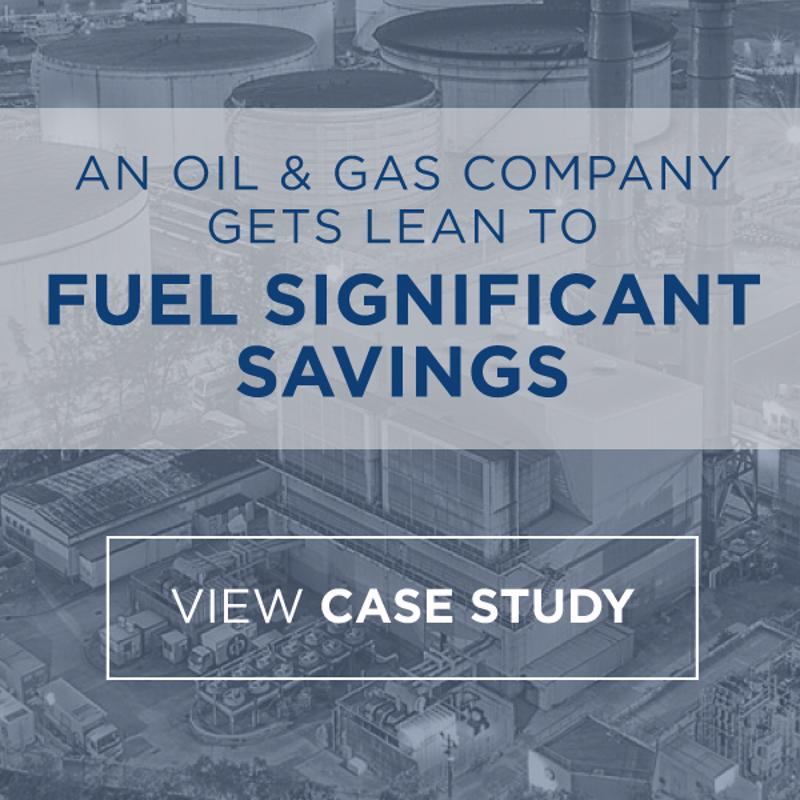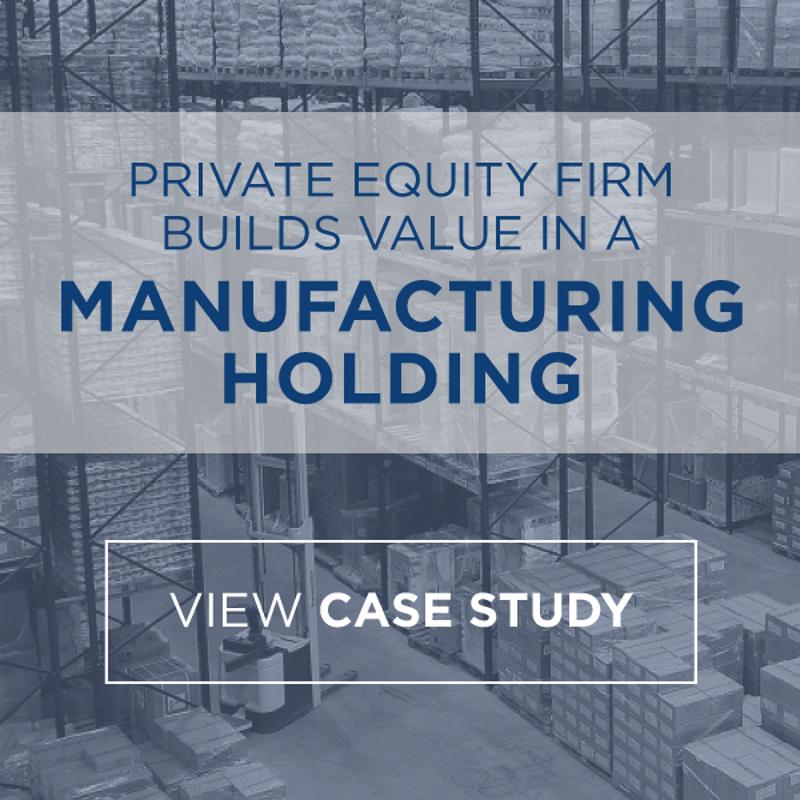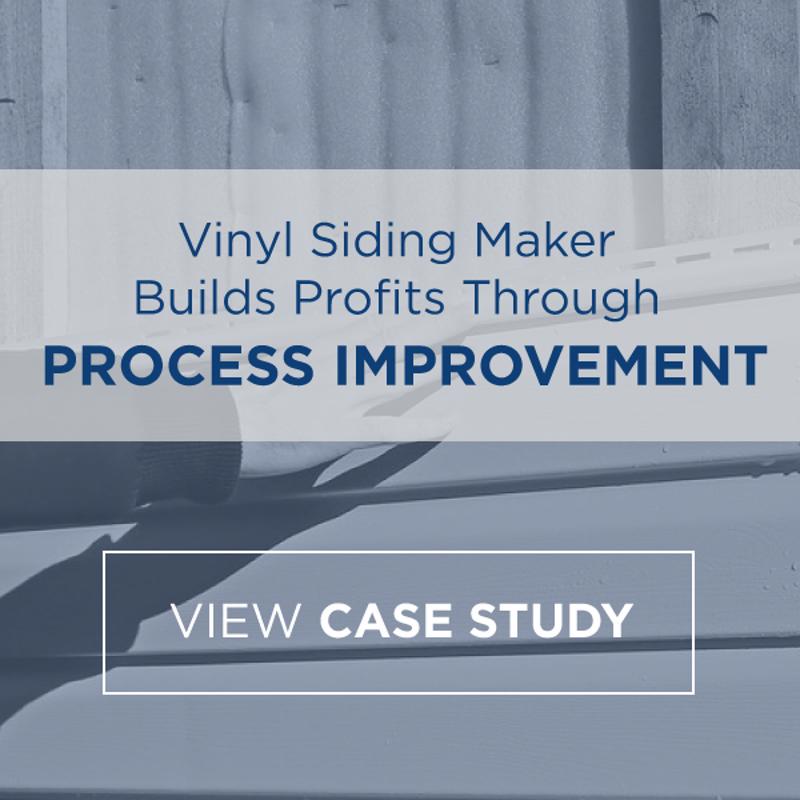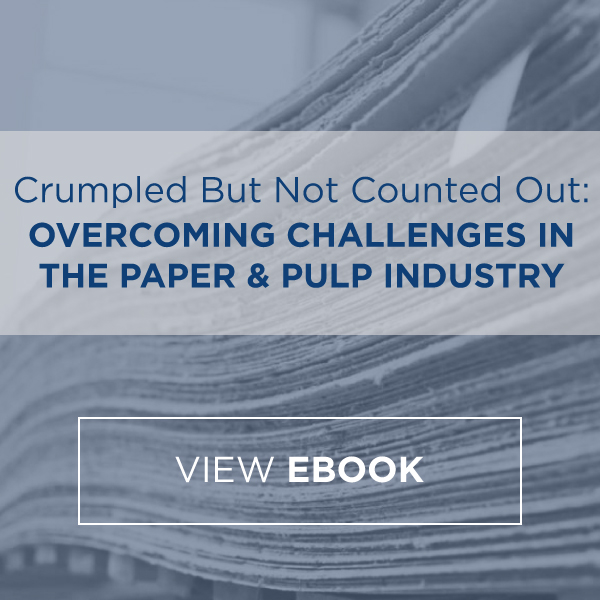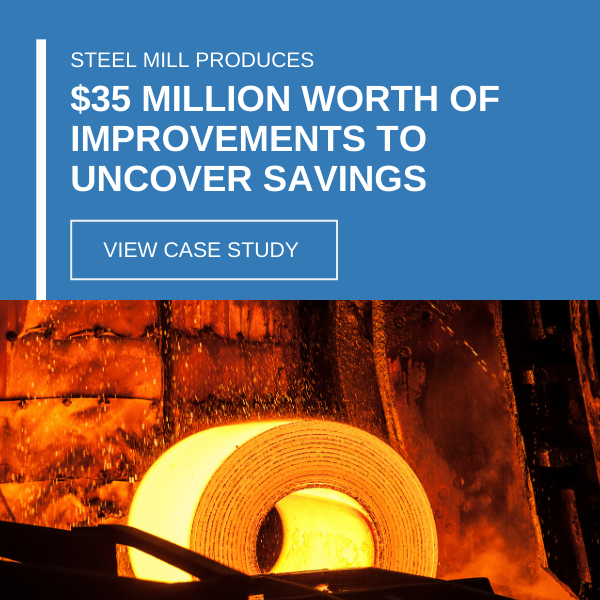-
Subscribe to Blog:
SEARCH THE BLOG
CATEGORIES
- Aerospace
- Asset Maintenance
- Automotive
- Blog
- Building Products
- Case Studies
- Chemical Processing
- Consulting
- Food & Beverage
- Forestry Products
- Hospitals & Healthcare
- Knowledge Transfer
- Lean Manufacturing
- Life Sciences
- Logistics
- Manufacturing
- Material Utilization
- Metals
- Mining
- News
- Office Politics
- Oil & Gas
- Plastics
- Private Equity
- Process Improvement
- Project Management
- Spend Management
- Supply Chain
- Uncategorized
- Utilities
- Whitepapers
BLOG ARCHIVES
- June 2025 (4)
- May 2025 (1)
- April 2025 (1)
- March 2025 (1)
- February 2025 (4)
- January 2025 (4)
- December 2024 (4)
- November 2024 (2)
- October 2024 (6)
- September 2024 (5)
- August 2024 (5)
- July 2024 (6)
- June 2024 (3)
- May 2024 (3)
- April 2024 (4)
- March 2024 (3)
- February 2024 (4)
- January 2024 (5)
- December 2023 (2)
- November 2023 (1)
- October 2023 (6)
- September 2023 (3)
- August 2023 (4)
- July 2023 (2)
- June 2023 (3)
- May 2023 (7)
- April 2023 (3)
- March 2023 (3)
- February 2023 (5)
- January 2023 (6)
- December 2022 (2)
- November 2022 (5)
- October 2022 (5)
- September 2022 (5)
- August 2022 (6)
- July 2022 (3)
- June 2022 (4)
- May 2022 (5)
- April 2022 (3)
- March 2022 (5)
- February 2022 (4)
- January 2022 (7)
- December 2021 (3)
- November 2021 (5)
- October 2021 (3)
- September 2021 (2)
- August 2021 (6)
- July 2021 (2)
- June 2021 (10)
- May 2021 (4)
- April 2021 (5)
- March 2021 (5)
- February 2021 (3)
- January 2021 (4)
- December 2020 (3)
- November 2020 (3)
- October 2020 (3)
- September 2020 (3)
- August 2020 (4)
- July 2020 (3)
- June 2020 (5)
- May 2020 (3)
- April 2020 (3)
- March 2020 (4)
- February 2020 (4)
- January 2020 (4)
- December 2019 (3)
- November 2019 (2)
- October 2019 (4)
- September 2019 (2)
- August 2019 (4)
- July 2019 (3)
- June 2019 (4)
- May 2019 (2)
- April 2019 (4)
- March 2019 (4)
- February 2019 (5)
- January 2019 (5)
- December 2018 (2)
- November 2018 (2)
- October 2018 (5)
- September 2018 (4)
- August 2018 (3)
- July 2018 (2)
- June 2018 (4)
- May 2018 (3)
- April 2018 (3)
- March 2018 (2)
- February 2018 (2)
- January 2018 (1)
- December 2017 (1)
- November 2017 (2)
- October 2017 (2)
- September 2017 (1)
- August 2017 (2)
- July 2017 (2)
- June 2017 (1)
- April 2017 (3)
- March 2017 (3)
- February 2017 (2)
- January 2017 (2)
- December 2016 (2)
- November 2016 (4)
- October 2016 (4)
- September 2016 (3)
- August 2016 (6)
- July 2016 (4)
- June 2016 (4)
- May 2016 (1)
- April 2016 (3)
- March 2016 (4)
- February 2016 (2)
- January 2016 (4)
- December 2015 (3)
- November 2015 (3)
- October 2015 (1)
- September 2015 (1)
- August 2015 (4)
- July 2015 (6)
- June 2015 (4)
- May 2015 (7)
- April 2015 (6)
- March 2015 (6)
- February 2015 (4)
- January 2015 (3)
CONNECT WITH US
Tag Archives: Direct Costs
Transportation and logistics organizations quite literally propel the modern marketplace, underpinning product and service delivery workflows worldwide. Unfortunately, the businesses that populate this key industry have come up against numerous challenges, including a number of environmental obstacles that impede the progress of the shippers and truckers navigating waterways and highways everywhere. Here are some of those roadblocks and ways that transportation and logistics firms might address them over the coming months and years:
Extreme weather patterns
In late 2018, the container ships navigating the Rhine River, Europe’s busiest commercial waterway, encountered a unique problem: The storied tributary was remarkably desiccated and unable to support large shipping vessels, Bloomberg reported. A drought had brought water levels in the Rhine basin to historic lows, forcing carriers operating in Western Europe to find alternative routes – or cancel shipments altogether. Although the Rhine’s water levels returned to normal in December 2018, according to Reuters, this is just one of the many instances in which extreme weather has threatened transportation and logistics operations in recent years. These occurrences, which scientists link to climate change, pose a significant threat to transportation and logistics organizations. In fact, extreme weather events, natural disasters, and “failure of climate-change mitigation and adaption,” rank among the World Economic Forum’s top five biggest business risks in terms of likelihood and impact.
Transportation and logistics enterprises have no choice but to adjust to this environmental risk, but how? Leveraging forward logistics, proactive notification and direct-store delivery strategies are among the most often recommended courses of action, Inbound Logistics reported.
Crumbling infrastructure
Infrastructure is a significant issue for transportation and logistics businesses operating in the U.S., where an investment gap of more than $4.5 trillion exists, according to researchers from the American Society of Civil Engineers. This problem affects virtually all transportation channels. Many U.S. ports cannot effectively handle modern container ships, leading to long-term delays and other serious problems, the trade association found. American roads are in a similarly sorry state, and in need of $836 billion worth of improvements and repairs, per the ASCE. Domestic railroads are also in disarray, as operators struggle with outdated cars, tracks, and stations that cannot meet the demands of commercial shippers, according to the group.
Industry organizations associated with each of these modes have called on local, state, and federal governments to invest in transportation infrastructure. This includes the Association of American Railroads and the American Trucking Association, both of which support large-scale institutional spending strategies. Unfortunately, the trillions needed to improve the country’s ports, roads, and rails are unlikely to materialize. This means carriers must take matters into their own hands by building flexibility into their supply chains to compensate for any infrastructure-related shipping slowdowns.
Increased government regulation
New pieces of government regulation are weighing heavily on organizations in the transportation and logistics space, according to research from Capgemini published in Logistics Management. While firms in the sector generally understand that carefully crafted statutes carry some benefit, many are concerned that the expenses associated with compliance outweigh potential advantages. For instance, the Federal Motor Carrier Safety Administration’s Electronic Logging rule, which took effect in December 2017, generated significant upheaval in the trucking arena as drivers cut down their hauling times to meet strictly enforced ELD regulations, the Chicago Tribune reported. This resulted in higher shipping costs, which ultimately trickled down to the customer.
Many transportation and logistics organizations struggle to comply with rules like the ELD regulation while maintaining healthy profit margins. While lobbying to stop the passage of additional rules can make a difference, companies in the space would be better off adjusting their internal processes in a manner that streamlines compliance and therefore mitigates its functional and financial impact on the operation.
Taken together, these challenges may seem insurmountable to carriers just looking to survive. This is not the case. By making some of the operational improvements mentioned above and embarking on more robust optimization efforts, transportation and logistics businesses can strengthen their position in the marketplace and find sustainable success. Of course, making such changes alone can be hard. This is where USC Consulting Group comes into play. We can tap into decades of consulting experience to help transportation and logistics companies of all sizes bolster their operations to account for new sector-specific challenges.
Contact USCCG today to learn more about our work in the transportation and logistics industry.
In March 2010, then President Barack Obama signed into law the Patient Protection and Affordable Care Act and ushered in the era of value-based health care. While various groups within the medical community had been pursuing this outcome for decades, the passage and enactment of the legislation greenlit the creation of regulatory infrastructure needed to promote and facilitate widespread adoption among health care providers, medical device makers and pharmaceutical firms, according to research published in the journal Current Reviews in Musculoskeletal Medicine. Experts predicted the effects of this would ripple across numerous health care-adjacent industries – most notably, the life sciences space.
Did this transformation unfold as expected? Now almost a decade removed from the signing of the ACA, it is possible to assess how the emergence of value-based care has impacted this key sector.
Grappling with operational change
In the immediate aftermath of the legislation, the Centers for Medicare and Medicaid Services swapped the volumetric provider repayment models of the past for those centered on patient outcomes. This modification incentivized hospitals to embrace value-based workflows that reduced the likelihood of readmission and eliminated unnecessary costs to patients. Businesses in the life sciences sector were ultimately forced to grapple with this transformation, as health care providers encouraged them to adopt value-based contracting practices.
The organizations that accepted this challenge made significant adjustments to their operations, incorporating evidence-gathering and patient-engagement methodologies into existing research and development processes with the intention of cultivating effective products that would bolster patient outcomes and therefore generate revenue. However, some companies in the life sciences space resisted, including pharmaceutical firms, many of which leveraged their power in the marketplace to push back against providers promoting value-based care. Just one-quarter of drug companies have adopted value-based contracting strategies, according to PricewaterhouseCoopers.
More transformation on the horizon
The value-based care transformation continues today, despite recent policy changes related to the ACA. Why? The concept works as intended. Almost 80 percent of insurance companies saw care outcomes improve between 2016 and 2018, while watching overall medical costs decrease by more than 5 percent over the same span, researchers from Change Health Care found. This is partially why 75 percent of providers are lobbying vendors in the life sciences sector and other industries to enter into value-based contracting agreements, according to Premier.
In the past, organizations in the industry may have been able to ignore these calls. However, the maturing state of value-based care and pressure from consumers is making this difficult. Here in the U.S., an estimated 80 percent of individuals using medication say pharmaceutical pricing is unreasonable, analysts for the Kaiser Family Foundation discovered. Politicians on both sides of the aisle agree and have expressed a willingness to intervene on patients’ behalf.
With this state of affairs in play, organizations in the life sciences arena would be wise to evaluate their internal workflows and move forward with modifications that prepare them for the value-based future. Here at USC Consulting Group, we have been helping businesses optimize their operations for decades, leveraging proven techniques and tools that ease change and lay the foundation for growth.
Contact us today to learn more about our work.
Raw material costs continue to increase as a result of recent economic developments – most notably, the new tariffs on aluminum, steel and Canadian lumber. Firms in the building materials manufacturing space are, of course, among the numerous industrial businesses dealing with the repercussions of these duties. Lumber companies looking to tap suppliers in the Canadian market must grapple with historically high prices, according to The New York Times. Sawmills in the Great White North are now charging $655 per thousand feet of product to offset tariffs as high as 21 percent. For comparison, the average price per thousand feet of Canadian fir, pine or spruce wood hovered near the $500 mark for most of 2017.
This situation has put building materials manufacturers in a tough position. Few of these firms are capable of absorbing higher costs and must make operational changes to keep their bottom lines intact. What exactly can companies in building material manufacturing do to mitigate the impact of increasing raw material expenses?
1. Operational optimization
Like most modern businesses, building materials manufacturers rely upon complex supply chains that contain numerous components and third-party stakeholders. Forward-thinking enterprises in this sector are scouring these intricate workflows in the hopes of uncovering hidden cost savings.
Transportation is often at the center of these supply chain optimization efforts, as it normally eats up the largest part of the logistics budget. Freight expenses went up significantly last year, according to the U.S. Bureau of Transportation Statistics. In 2017 alone, American businesses devoted more than $1.1 billion to transportation initiatives, an increase of 6.6 percent over figures recorded in 2016. This number is not likely to decrease any time soon, making transportation a good area of focus for building material providers looking to cut costs in light of rising raw material expenditures.
But what exactly can they do? Contracting steady lane volume and shipping on off-peak days are strong strategies, according to Mark Johnson, senior vice president of transportation and solutions for Kane Is Able, a third-party warehousing and transportation services provider. Investing in relationships is another good methodology. Building material manufacturers that make the effort to form sustainable connections with third-party shippers are more likely to see savings than those that continually chase discounted services.
2. Smarter staffing management
U.S. manufacturers have embraced outsourcing over the last dozen or so years, researchers for the Bureau of Labor Statistics found. For instance, in 2015, the last year for which BLS data was available, temporary workers accounted for almost 10 percent of the American manufacturing workforce. Companies in the building materials manufacturing industry have most certainly embraced this model in an effort to reduce staffing costs and facilitate operational scalability.
Even so, such arrangements can weigh on the bottom line, as businesses with hastily managed outsourcing programs find out. Building material manufacturers cannot afford to suffer such inefficiencies, especially as raw material expenses rise. With this in mind, organizations in this space should maintain relationships with multiple outsourcing partners to drive competition and bolster service quality.
Additionally, human resources personnel and operational leaders must deploy temporary workers wisely – right-sizing contingent staff orders, for example – to generate a return on investment and reduce waste.
3. Passing on the cost
With the average cost of building a home in 2022 rising to $1,393.55 per sqm, here is one cost-cutting method a significant number of building materials manufacturers have implemented for absorbing higher material prices: passing the costs to customers. This is, of course, not ideal for many reasons. Few building materials manufacturers want to charge higher fees, as such increases may not only trickle down to individual consumers but also put them at risk for getting priced out of the market. However, some businesses in the industry find themselves with no other choice.
Building materials manufacturing companies that embrace these methodologies can sustain their bottom lines, even as various external forces push material prices higher and higher. Businesses that require additional assistance in the face of rising costs should consider connecting with USC Consulting Group. With 50 years of experience, we can help building materials manufacturers of all sizes retrofit their operations in response to recent economic pressures.
Contact USC Consulting Group today to learn more about our services.
What a time to be a private equity fund manager. According to Preqin, worldwide private equity holdings in 2016 reached a value of nearly $2.5 trillion. Private Equity liquid assets increased by $65 billion between 2015 and 2016.
Nestled amid that growth lies food and beverage, historically one of the more dependable performers in the PE portfolio. Investment banking and wealth management firm William Blair predicted that the number of M&A transactions in food manufacturing in 2017 broke records, toppling all other yearly totals in the past decade.
With that said, food and beverage acquisitions in the U.S. aren’t always the slam dunks they appear to be. When considering any acquisition, firms should always take the proper general precautions as well as those specific to the industry they’re targeting. What factors should PEs consider when deciding whether to invest in a food and beverage company?
1. Labeling regulations and court decisions
Class-action lawsuits involving food labels have rocked the food and beverage industry of late, and how appellate courts respond to this tumult might ultimately dictate how PE firms settle on their best bets for a profitable acquisition.
A recent report from the Institute for Legal Reform found that a few instances of possible misleading labels made up a majority of the litigation:
- Claims of “natural,” “preservative free” ingredients.
- Claims of “handmade” products or products “made in the U.S.” that aren’t.
- Fruit and beverage imagery on packaging to allegedly purport health.
- Slack fill packaging that includes extra space to protect contents but also bloats its appearance.
Any PE firm investigating a possible acquisition should examine any possibility that its targets will suffer from lawsuits, or that upcoming regulatory changes from the Food and Drug Administration will force its prospective holdings – and by default, the firm – to spend on shifting compliance. This includes a review of current and future packaging, labeling processes, sourcing relationships, etc., as well as location. The aforementioned study revealed that three-quarters of labeling-related federal litigation occurred in California, New York, Florida or Illinois. Another 10 percent occurred in Missouri, New Jersey and Pennsylvania.
2. Specialty food opportunities
These days, the size of an F&B business is not as important as growth opportunities within an industry niche. Big companies with nothing new to offer will not see as much favor as smaller companies with new products to offer the market or new value-adds that resonate with consumers.
But a new flavor that draws in a once untargeted demographic or an attractive superfood ingredient isn’t nearly as important as evidence of sustainability – in both production and demand. Is this change a long-term value or a flash in the pan? Does the company have the bandwidth to meet capacity increases? Are sourcing relationships for new products as beneficial as they could be? Answers to these questions and more will demonstrate whether a company has what it takes to earn your acquisition and subsequent investment.
3. Plans for direct-to-consumer model
Amazon’s acquisition of Whole Foods sent a message to food and beverage manufacturers and retailers alike: There’s no ignoring the disruption caused by the direct-to-consumer model.
Consumer packaged goods producers on the table for acquisition have likely spent the past few years in a defensive cost-cutting posture, hoping to reduce opex without compromising on quality and mild operational expansion. This may be the reason why PEs are eyeing these businesses to begin with.
Amazon/Whole Foods, however, represents an industrywide challenge of sorts. CPG companies, acquired or not, must formulate solid plans for evolving their products based on this market movement. Should they have these plans in place upon a visit from a hungry PE firm, that firm must weigh the quality of that strategy as a considerable part of their internal valuation. Put another way: If the food and beverage company has little to no plan for facing the Uberification of groceries, PEs must take note. It’ll mean passing on the venture entirely or expending resources to develop a strategy once the company is acquired.
Packaging is one such determinant. Innovation-minded food and beverage manufacturers are less inclined to worry about shelf appeal and more inclined to consider meal kits, cost-effective packaging designs built for shipping and perhaps even a change in portion sizes. These businesses, however, must support these plans with evidence of progress to win the attention of PE firms.
Of course, no acquisition is a sure thing. After all, PE firms specialize in transforming underperforming businesses. But if your organization has struggled with turning around an asset in your portfolio, contact USC Consulting Group today. Our operations management team will help you create a system for immediate and continuous improvement based on years of industry knowledge.
Food and beverage companies need to meet customer expectations and optimize operational processes to succeed in a new market. However, not every business has the means to contend in this new environment, nor the internal processes to counter evolving consumer tastes. Still, there are strategies organizations in the industry can implement to help keep them modern and marketable.
For more insight on how trends in the food and beverage industry impact manufacturers today, download our e-book, Trouble at the Table.
Clay and refractory building materials and ceramics manufacturing saw hard-fought growth of 2.7 percent annually from 2011 to 2016, according to IBISWorld, despite turbulence experienced by its industrial customers and a post-recession housing market. However, financial successes of the past may not last long. In the coming years, the sector will undergo cost challenges from all angles, internal and external alike.
Rising energy costs may trigger asset investments
Like other building materials manufacturers, clay production consumes a considerable amount of energy and pays handsomely as a result. According to Ceramic Industry Magazine, $0.30 of every dollar spent on manufacturing in this sector goes toward electricity or natural gas expenditures. Thankfully, natural gas prices fell after 2014 and have stayed low through 2016. Clay and refractory, in turn, has had time to weigh the consequences of its energy usage without an overbearing threat of financial instability or even the environmental regulations coal users like cement have confronted.
But those days may be numbered according to natural gas forecasts from the Energy Information Administration. The agency projects natural gas prices will return to 2014 levels between 2017 and 2020. Prices for natural gas moving forward will still be lower than prices at the start of the 21st century or in the 1990s, but the volume at which clay and refractory consumes natural gas, not to mention electricity, may put pressure on tight budgets nonetheless.
What could this drive this industry to do? Low prices haven’t stopped U.S. natural gas from producing at full steam. Industrial businesses from all sectors have begun buying up energy reclamation technology that recycles wasted heat otherwise lost during production. Will clay and ceramics be the next to invest? Again, that depends on how badly energy costs hurt in 2017.
Market concentration and fluctuation among key consumers
Success in clay products and refractory manufacturing depends on the economic activity of related industries such as steel, glass, and construction. So how have these industries performed lately?
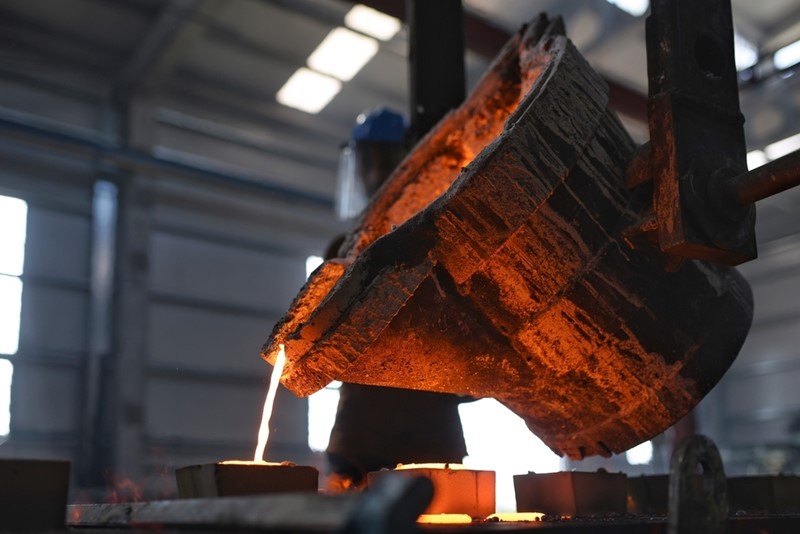
Declining steel production affect refractory manufacturing greatly.
Production losses in steel have been a major sticking point for ceramics. In 2015, American mills shipped 12 percent less domestically than they did in 2014, according to industry research from Thomas John Gibson, president and CEO of the American Iron and Steel Institute, and Chuck Schmidt, president of SSAB International and AISI board member. While sluggish construction rates or a U.S. preference for imported materials might be the causes behind this decrease, there is only one effect on ceramics: fewer refractories built for these mills, a considerable source of revenue for many businesses in this sector. Worse still, loss of competition in metals naturally drives clay producers to lower their prices. According to Dun & Bradstreet Company, the top 50 businesses in the U.S. industrial sector generate 65 percent of the revenue. Further concentration without intervention from government agencies may irreversibly impact clay manufacturing in America.
A projected bump in construction growth in 2017 could ease the financial pain, but only if it actually comes true. Uncertainty surrounding new political leadership in the U.S. and a wide employment gap spell trouble for construction and, by proxy, ceramics. In the years leading up to and following the most recent recession, 40 percent of construction jobs disappeared, according to The Wall Street Journal. In any substantial way, those jobs have yet to return. Government investment in infrastructure might bring them back and convince a new generation of millennial workers to pick up their hard hats. But until moves are made, ceramics will remain cautiously optimistic.
Clay, refractory, and ceramics manufacturers that focus on optimizing production, reducing waste and standardizing workflows have the power to respond to times of financial worry with agility and intelligence. Want to know more about how USC Consulting Group assists businesses as they audit their processes? Visit our industries page for additional information.
What will be the future of paper in a world under conquest by paperless media?
Inquiring mills around the world want to know. While the news certainly won’t send pulp and paper producers into fits of celebration, it is by no means a death sentence to the industry. Rather, these trying times are fertile ground for active reflection and decision-making.
It would be inaccurate, or at least misleading, to say that paper production overall has plummeted over the past decade. According to a report from Hawkins Wright, a market intelligence service provider,paper production grew adequately in emerging markets and developing nations over the previous decade. But even these small successes come with caveats. For one, growth has slowed in these regions in the last few years.
Waning economic activity in mature markets, however, indicates a much bigger problem. Generally speaking, if the maturity of a region triggers a drop-off in production volumes – say, a developing country develops beyond the need for an abundance of paper products – then the industry as a whole has seen where its limit lies. Research from RISI corroborated this phenomenon: Global printing and writing paper forecasts from 2007, when demand peaked, projected figures around 40 million metric tons more than what the numbers currently are. And while predictions from the heyday of 2007 climb higher into 2017 and beyond, the reality is demand has slipped and plateaued.
What does this tell us about paper and pulp? Barring innovation, across-the-board production will continue its downward trajectory regardless of region and flatten out.
While immediate fixed cost slashing may relieve economic pressure for paper and pulp mills, it isn’t a panacea. These facilities will need to address their variable costs as well. Takt time, maintenance spend, uptime disruption, resource utilization, waste – nothing can be taken for granted. This is an opportunity to reinvent this industry from the ground up. Managing these factors allows mills to confidently meet the expectations of the modern consumer and generate profit instead of playing catch-up in perpetuity.
To answer questions you have about the status of paper and pulp in 2017, as well as the best methods for reining in the industry’s most formidable costs, we’ve written an eBook on the subject: Crumpled But Not Counted Out. Check it out here.
How are American metallurgists doing these days? At a cursory glance, presumably well. The U.S. Geological Survey estimated the iron and steel industry in America, for example, produced 26 million metric tons of pig iron and 81 million metric tons of raw steel in 2015, cumulatively valued at about $103 billion.
Quite a substantial feat and an economic boon to sectors like construction and automotive, unless one looks at the recent past. Of the top 11 independent iron- and steel-producing countries in the world between 2014 and 2015, the U.S. experienced the biggest drops in both iron and steel production among them all. In steel, the U.S. fell from third place to fourth. In iron, the U.S. fell from fifth place to seventh.
What’s behind these plummeting production figures? It could have something to do with the recent U.S. Department of Commerce investigation focused on an alleged tariff-dodging scheme and the dumping of low-cost corrosion-resistant steel imports from China. But because that story is still in development, let’s turn instead to the operational and regulatory challenges in metal smelting that undoubtedly raise financial issues for U.S. metal makers.
Carbon emissions and regulatory restrictions
Research from the Center for Climate and Energy Solution shows the industrial sector generates about 20 percent of all greenhouse gas emissions in the U.S. CCES also pointed out industries like iron production and cement manufacturing as major contributors, as their high-heat coal and coke-powered furnaces directly release carbon dioxide.
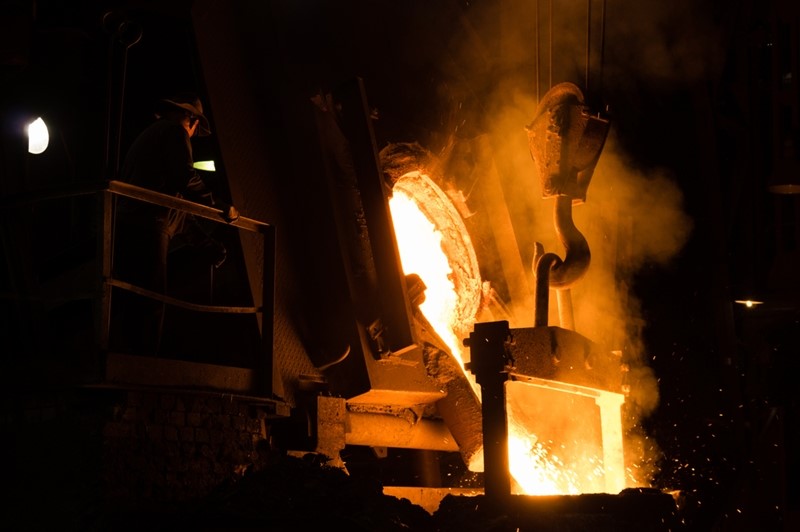
As metal industries enter the crucible of federal regulations, will something new be forged? Or will businesses simply get burned?
Numbers like these are what drive government agencies to step up regulatory costs for businesses, with industries like metal and cement taking the brunt. A 2014 study from the National Association of Manufacturers estimates environmental regulatory costs to U.S. businesses reside in the ballpark of $330 billion annually.
Furthermore, hazardous air pollutants caused by many forms of metal production have caught the ire of U.S. regulators. The Environmental Protection Agency’s Clean Air Act, for instance, forces metal makers to invest in maximum achievable control technology (MACT). As such, smelters not only pay more than ever for their processes, they also invest more in technological advancement because of government oversight.
Can new smelting technology help businesses win out in the end?
Absolutely, according to the Institute for Industrial Productivity. HIsmelt, Hisarna, and Romelt smelting processes and technology like cyclone converter furnaces achieve remarkable reductions to carbon emissions, some by removing coke use altogether. With a substantial amount of operating expenses in metal manufacturing going to regulators, smart investment in long-term environmental solutions could easily prove lucrative.
Recently, MIT researchers accidentally stumbled upon a promising new smelting method that could potentially revolutionize industries like copper and nickel. While attempting to develop a new “all-liquid high temperature storage” battery, scientists instead discovered a way to produce pure metals without producing sulfur dioxide. Moreover, if it can be scaled to industrial levels, this method will also lower energy costs for metal manufacturers, a significant burden in industries that have to keep furnaces at a few thousand degrees Fahrenheit at all times.
Metal as an industry isn’t going anywhere, but disruption is imminent. In an age of innovation and environmental cognizance, old-world processes will no longer suffice.

